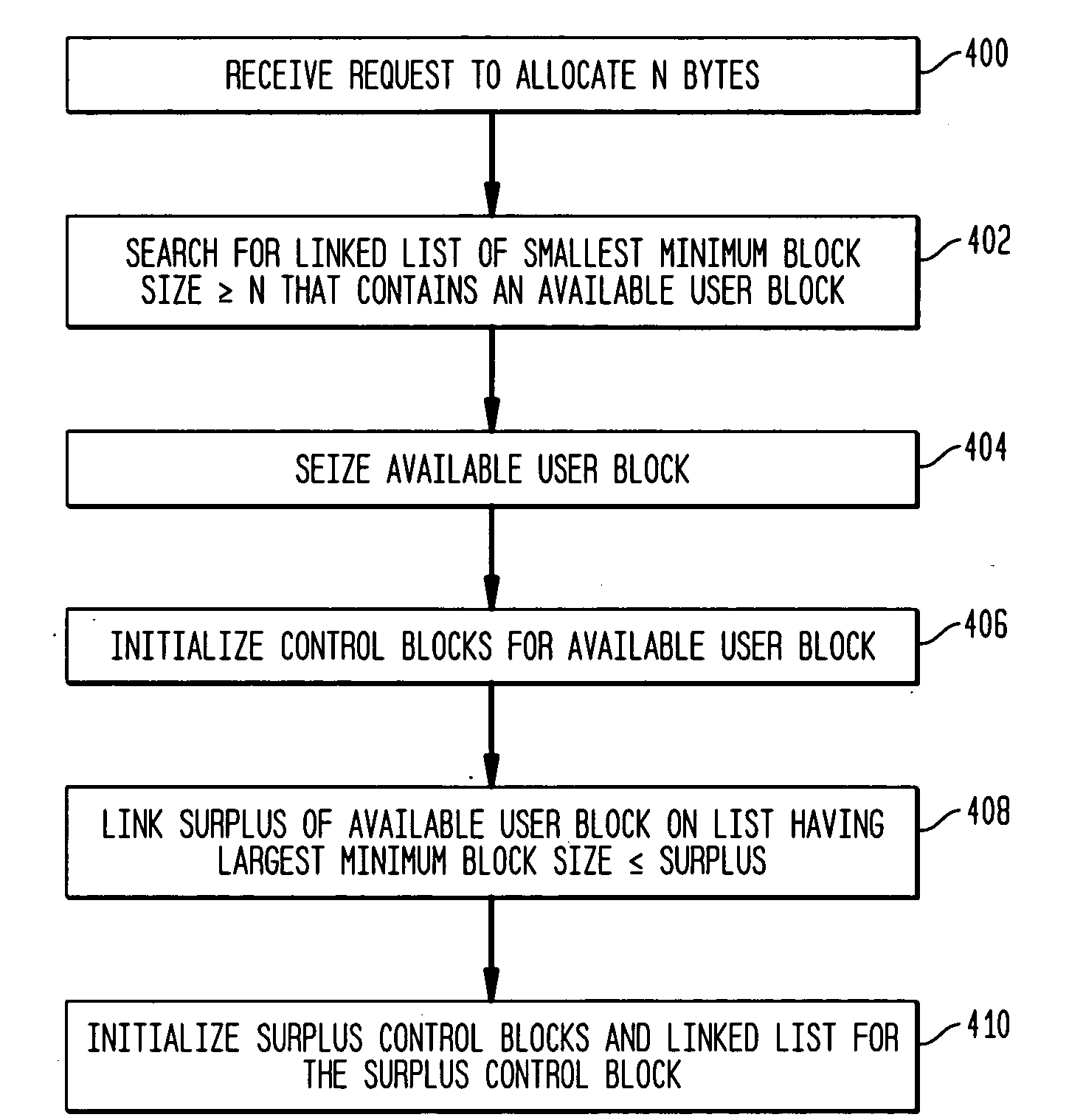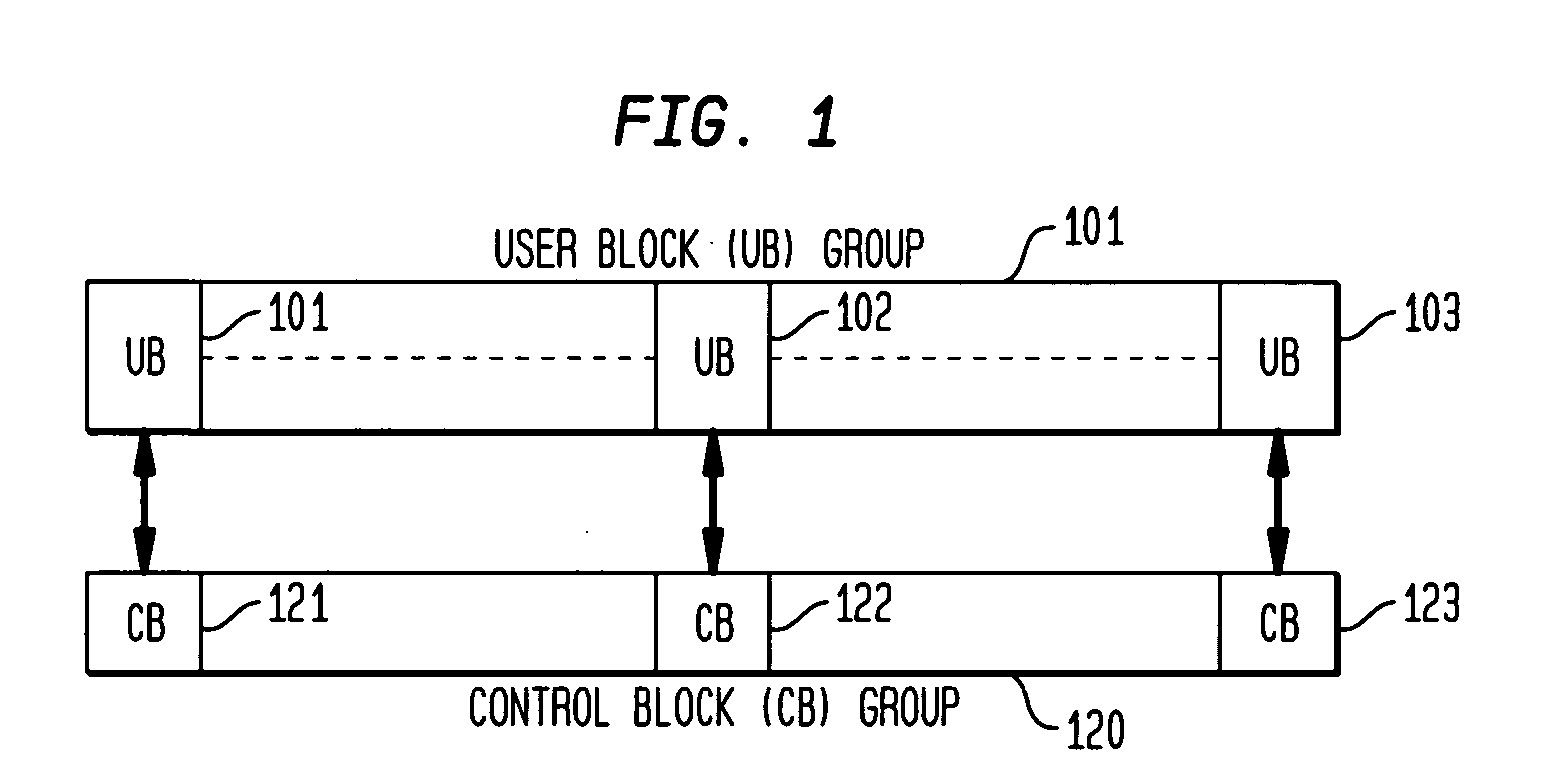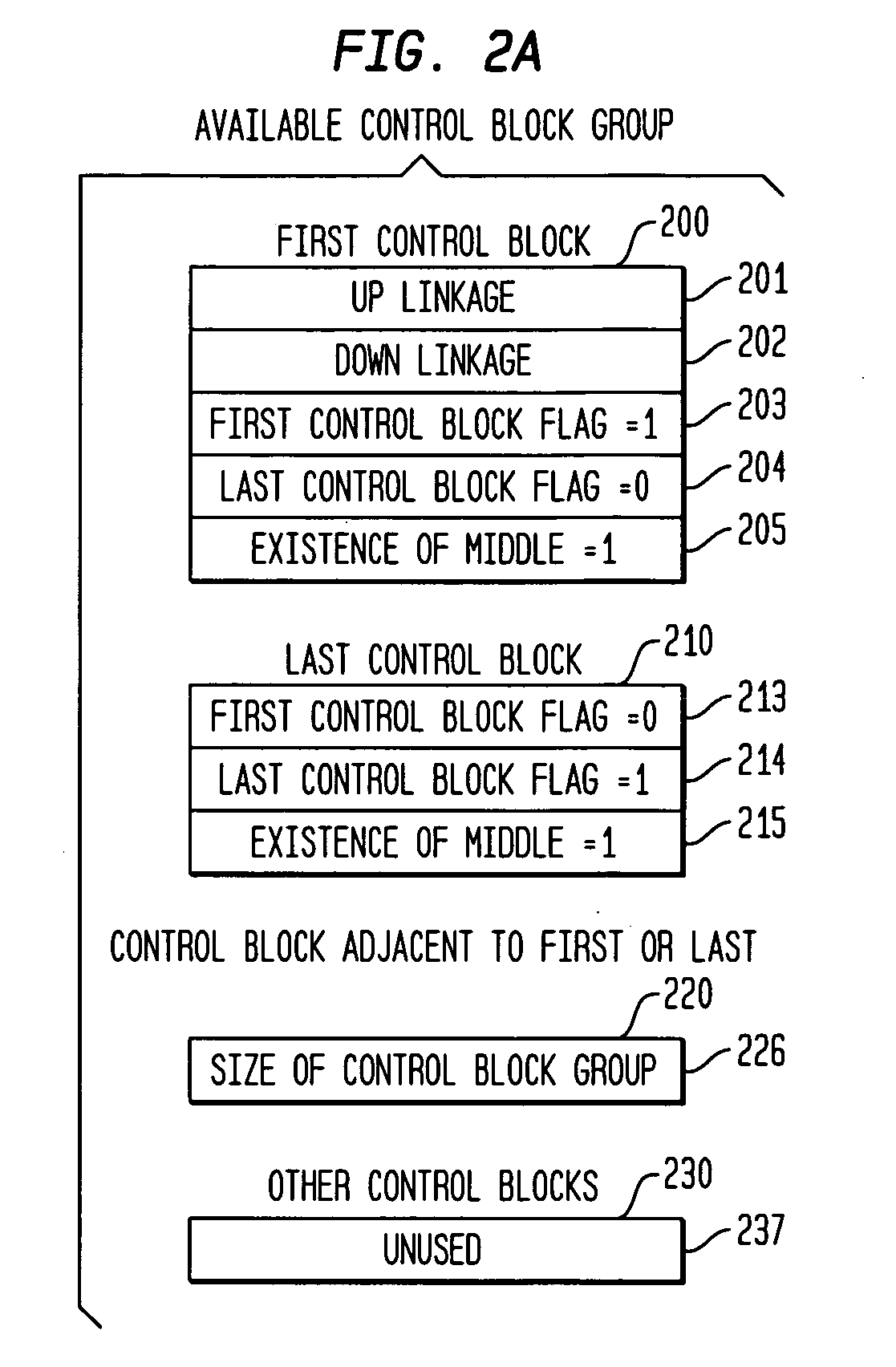Fast, high reliability dynamic memory manager
a dynamic memory manager, high reliability technology, applied in the direction of memory adressing/allocation/relocation, instruments, computing, etc., to achieve the effect of rapid search, high usage level, and rapid deallocation
- Summary
- Abstract
- Description
- Claims
- Application Information
AI Technical Summary
Benefits of technology
Problems solved by technology
Method used
Image
Examples
Embodiment Construction
[0024]FIG. 1 is a memory layout showing that for each user block there is a corresponding control block. This makes it possible, given the address of the control block, to find the user unit and vice versa. In Applicant's particular implementation, a control block is six bytes long and the user unit is 64 bytes long. This small investment in control block memory pays large dividends in providing for a flexibly reliable and fast dynamic memory manager. With this arrangement, if a user block consists, for example, of six 64 byte units, then the corresponding control block group would have six six byte control blocks. There are control blocks for the entire range of user memory. Also note that control blocks are not physically located in memory next to the user blocks. Thus common program bugs such as writing past the end of an allocated buffer only affect the next buffer, not the control data itself.
[0025]FIG. 2A shows the layout of an idle control block group. The first control bloc...
PUM
 Login to View More
Login to View More Abstract
Description
Claims
Application Information
 Login to View More
Login to View More - R&D
- Intellectual Property
- Life Sciences
- Materials
- Tech Scout
- Unparalleled Data Quality
- Higher Quality Content
- 60% Fewer Hallucinations
Browse by: Latest US Patents, China's latest patents, Technical Efficacy Thesaurus, Application Domain, Technology Topic, Popular Technical Reports.
© 2025 PatSnap. All rights reserved.Legal|Privacy policy|Modern Slavery Act Transparency Statement|Sitemap|About US| Contact US: help@patsnap.com



